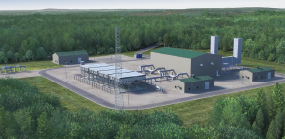This INGAA Foundation report, completed in January 2013, explains how interstate natural gas pipelines are constructed from the planning stages to completion. The construction primer is designed to help the reader understand what is done during each step of construction, how it is done, the types of equipment used, and the types of special practices employed in commonly found construction situations. It also describes practices and methods used to protect workers, ensure safe operation of equipment, respect landowner property, protect the environment and ensure safe installation of the pipeline and related facilities.
This primer is meant to be used by those interested in pipelines and their construction, including federal agencies, landowners, the public, state and local governments, emergency responders and new industry and government employees.
Many variables impact the construction of a new pipeline. The primer addresses many of these variables, but it is impossible to address them all. Some of the variables addressed include:
- Scheduling to complete a project in a timely manner.
- Workspace needs necessary for safe construction, operation and maintenance.
- Environmental considerations such as sensitive habitats and wetlands, archaeological sites, and topological features such as steep hills and side slopes that create specific workspace and safety needs.
- Regional differences, such as population density.
- Route selection analysis that focuses on minimizing potential impacts to agricultural lands, homes, communities, planned future development and environmentally sensitive areas such as wetlands, parks and forested areas.
Three appendices are included to address the following: Appendix A -Technical Basis for Nominal Right-Of-Way Widths, Separation, Workspace and Additional Temporary Workspace; Appendix B – Standard Construction Drawings; and Appendix C – Guidelines for Parallel Construction of Pipelines.



